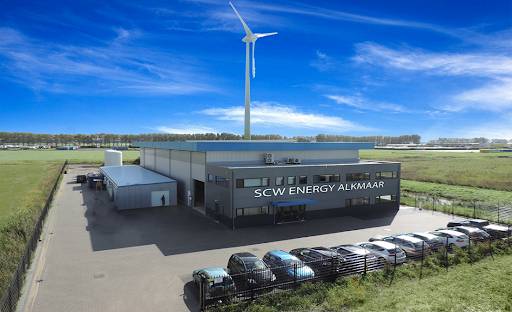To achieve this ambition, various technologies are available. At a high level, the production of green gas can be divided into two categories:
- The existing, widely applied technologies based on digestion, such as mono-manure digestion and co-digestion. The challenge with these projects is replicability with regard to the number of installations (for example, mono-manure digestion) and/or scaling up the size per installation (large-scale and industrial digestion projects). High-pressure digestion is also described under this category because it involves digestion; in terms of market readiness, this technology is in the demo phase (TRL8) and is not yet widely applied.
- The new technologies based on supercritical and thermal gasification that are now in the pilot phase and where the first demos are being prepared. The challenge in this category is the technology development from TRL6/7 to TRL8/9 through scaling up from pilot to demonstration projects and then widespread implementation. It is expected that gasification projects can develop in a large-scale, industrial environment because scale is required to achieve profitable business cases.

To significantly increase the volume of green gas, it is important to reduce the cost price and extract more and more value from bio-resources. Biomass refining and multiple valorisation are key technologies, the innovation program primarily focuses on production as that is where the biggest challenges lie.
Innovation-agenda
To achieve the ambition of scaling up the produced volume of green gas from 230 m3 now to 2 BCM green gas in 2030, all stops will need to be pulled out. Innovation plays a key role here because not all the necessary innovations have been developed and/or implemented yet to enable the required scaling up. The green gas sector, in which about 100 companies/organizations in the Netherlands are active, is still relatively limited in size (an indicative turnover of approximately €130 million in 2019) but has the potential to grow into a significant economic pillar with an estimated turnover of €1.6 billion per year in 2030.
The innovation agenda for green gas consists of four programmatic tracks:
- In the short term, support scalable and repeatable conversion technologies (supercritical and thermal gasification) that are on the verge of demonstration and market introduction and that have the potential to convert a wide range of available, mainly low-grade, bio-resources into green gas on a larger scale. The emphasis should be on techniques that are now at TRL6/7 and that still need limited support to reach demonstration and implementation (TRL9). The largest budget request lies in this part due to the expected (industrial) scale of the projects.
- In the short term, in the period up to 2025, fine-tuning of (nearly) fully developed technology (digestion) so that efficiency, costs, diversity of biomass input and production of green gas are continuously improved. This can lead to improvements and larger volumes of green gas that build on the current developments in the field of digestion.
- In the short term, support the broader market introduction and scaling up of green gas, aimed at faster realization of projects while seeking ways to minimize societal impact and maximize societal value. The key is to seek broader involvement of societal stakeholders in realizing the potential of green gas and solving institutional impediments.
- In the longer term, in the period up to 2030, develop new options that maximize the transition to a circular economy, such as bio-refining and the production and application of new bio-resources (such as residues from seaweed production). These options are expected to yield results only later in this period, but it is necessary to start with them now.

Ruud Paap
E: r.paap@tki-gas.nl T: (+31) 06 1057 9984
Pilot projects
The project database provides a good overview of relevant projects in this field. Within TKI New Gas, you can search for digestion and gasification projects.
